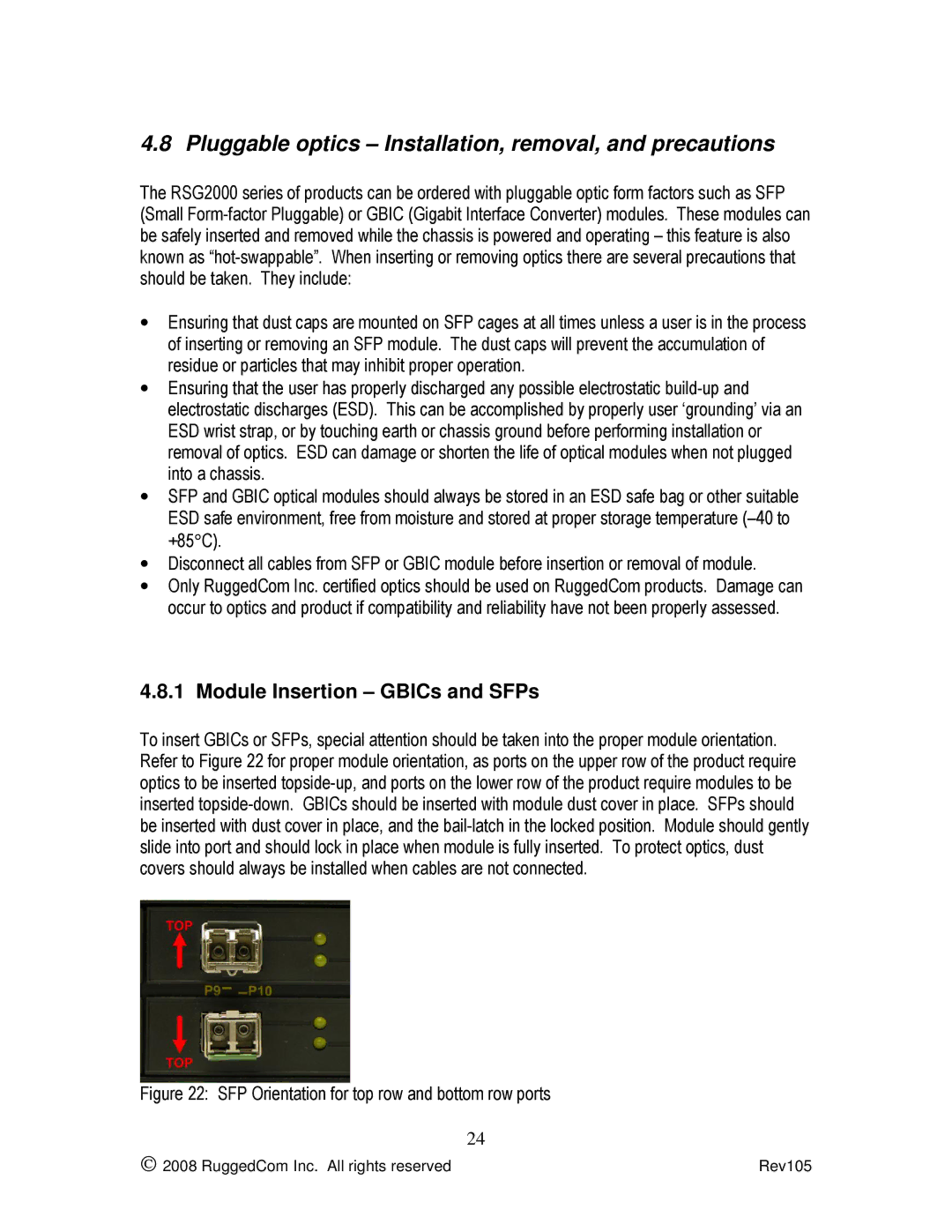RSG2200 specifications
The RuggedCom RSG2200 is an advanced, high-performance router designed specifically for mission-critical applications in harsh environments, making it an ideal choice for industries such as transportation, utilities, and telecommunications. This rugged router combines exceptional reliability, robust features, and cutting-edge technology to meet the stringent demands of industrial networks.One of the RSG2200's main features is its rugged design, which includes a durable enclosure that meets or exceeds IP40 ratings. This ensures protection against dust and moisture, making it suitable for outdoor installations and environments prone to extreme temperatures and vibrations. The device can operate in a temperature range from -40°C to 85°C, ensuring continuous performance even under adverse conditions.
The RSG2200 supports a wide variety of networking protocols, including Ethernet, MPLS, and IP, offering users and organizations the flexibility to implement diverse networking solutions. Additionally, it features multiple Gigabit Ethernet ports that facilitate high-speed data transfer and provide redundancy through various Ethernet redundancy protocols like Rapid Spanning Tree Protocol (RSTP) and Media Redundancy Protocol (MRP).
For enhanced security, the RSG2200 is equipped with advanced firewall capabilities, VPN support, and intrusion detection systems, which are critical for protecting sensitive data and ensuring the integrity of the network. This makes it well-suited for applications requiring secure communications, such as Smart Grid implementations or critical infrastructure monitoring.
Another noteworthy characteristic of the RSG2200 is its modular design, allowing for easy upgrades and expansions to adapt to changing network requirements. Users can customize the router with different port configurations or add specialized modules for additional functionalities, providing long-term investment protection and scalability.
The RuggedCom RSG2200 utilizes Quality of Service (QoS) features, enabling priority traffic handling and bandwidth allocation for critical applications. This ensures that time-sensitive data, such as voice or video communications, receive the bandwidth they need, improving overall network performance.
In summary, the RuggedCom RSG2200 is a robust and feature-rich router designed for industrial applications that require high reliability, performance, and security. Its rugged construction, versatility, and advanced networking capabilities make it an ideal solution for organizations looking to build and maintain reliable, secure networks in challenging environments.

